

Tora Endestad Bjørkheim and Johnny Herbert
courtesy of Sigve Knutson
Sigve Knutson's innovative practice is devoted to giving people new material experiences. He frequently invents materials to bring himself and his audiences closer to a collective, creative memory. In this interview by Tora Endestad Bjørkheim and Johnny Herbert we learn more about his craft process and interests.
Coming from a small town in the south of Norway, the young Sigve Knutson went through phases of focussing on cooking and classical music. However, due to frustration with the relationship between learning and presentation, he decided to apply to The Oslo School of Architecture and Design (Arkitektur- og designhøgskolen i Oslo, AHO).
'A friend of mine studied industrial design, and I guess I was attracted by the idea that you could work on something until you felt like it was ready to be shown. After spending three years in Oslo, I applied to Design Academy Eindhoven for a master’s course called ‘Contextual Design’. They were two totally different educations: In Oslo we learned how to work for others, and in Eindhoven we learned how to work for ourselves. I felt like I had more to offer if I was allowed to work for myself and realise the ideas I had.'
Drawn Objects, his final project in Eindhoven, soon led to solo shows during the design weeks in Milan and Beirut in 2017. These shows in turn brought him to the attention of the design world. When creating Drawn Objects, Knutson allowed intuition and imagination to influence and inform his making of the objects. He explored drawing as a tool in the production process. Knutson’s analogue techniques and hands-on methods turn upside-down the current omnipresence of digital tools in the field of design.
'I didn’t have much knowledge about how to make things when I started my master’s degree, but I wanted to make objects. So, I turned to the drawings I had been doing for a long time and used them as a library of fictive materials. I then focused my attention on the real world of materials and techniques to find some sort of parallel. I tried to find material-shaping techniques that would allow for much of the same freedom that I found in drawing, and this opened a whole new world for me. I became interested in the personal and intuitive aspects rather than the smooth and planned, since the latter are what I so frequently encounter in the design world.'
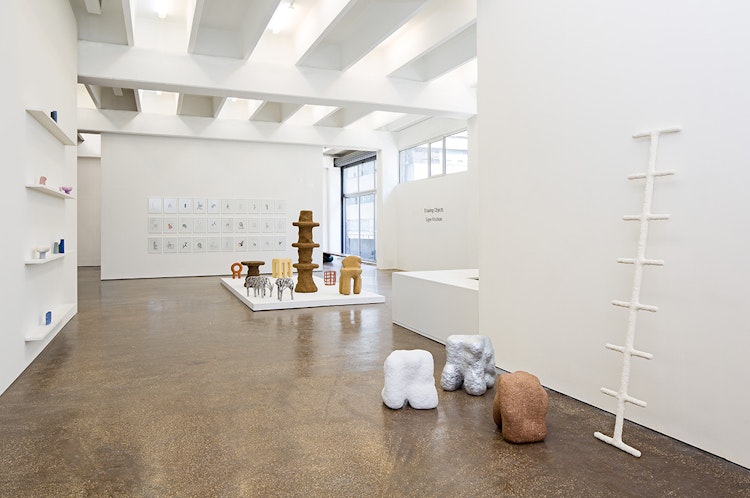

Rather than seeking perfection and repetition, I am more interested in our collective creative memory; I try to make objects that connect us to some of the very first handmade objects.
Drawing as tool
Knutson uses drawing as a tool to understand where he wants to go next with his work, emphasising that this allows him to make something chaotic more concrete whilst still keeping the process intuitive and exploratory.
'Whenever I draw, I try not to think in terms of function or material. If I have a specific material in mind, then it is better to work directly with the material. I try to start with some lines or dashes in the paper and then let the drawings evolve from that. Sometimes I make a drawing that describes an object I later will try to make, but most of the time, only a fragment or element of a drawing will lead to the making of an object. I try to approach making objects in a similar way to making a drawing. In that way, it is not about what came first but more a matter of give-and-take: an object can lead to a drawing, which again leads to the making of another object, or vice versa.'
Keen to keep the process intuitive and to retain this attitude in the finished work as well, his practice emphasises the handmade object over mass-produced furniture. On questions of production, he mentions the 1st Istanbul Design Biennial’s focus on bottom-up processes—the craftsperson’s workshop over factory manufacture—as a source of inspiration while he worked on his master’s degree, and as something that guided him towards the work he is doing today.
'Rather than seeking perfection and repetition, I am more interested in our collective creative memory; I try to make objects that connect us to some of the very first handmade objects. It is very much an evolving process, like a chain of things leading to new things. When making things for factory production, there has to be a conclusion—a grand, final design—and I have a hard time seeing the things I make as conclusions and answers.'
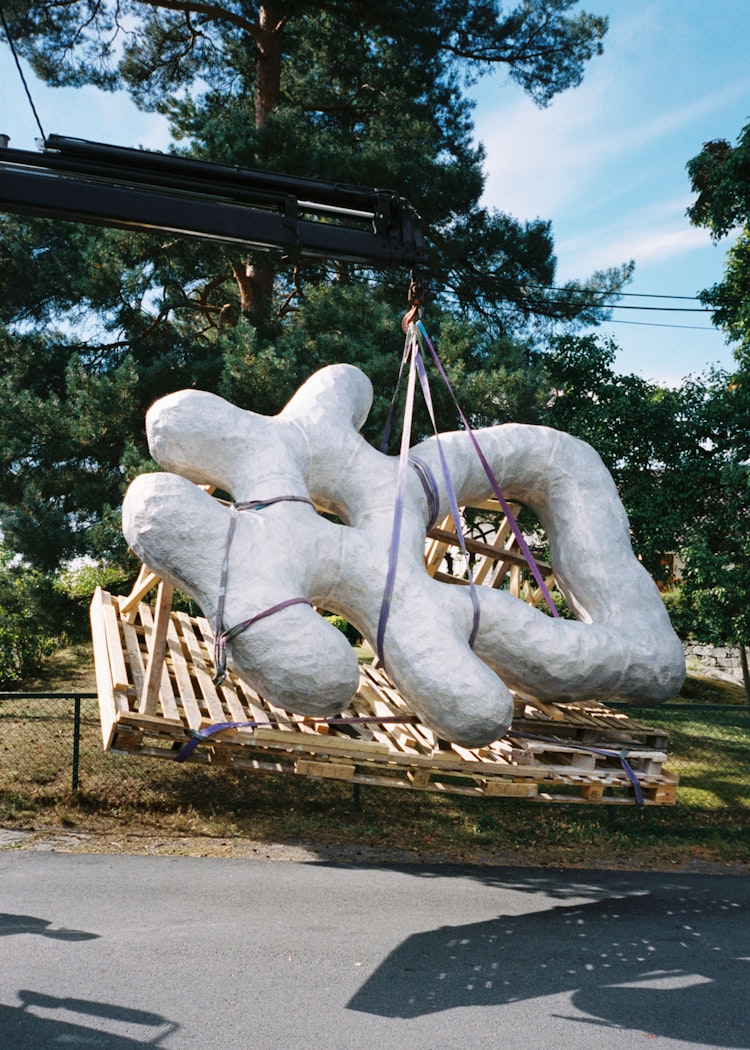
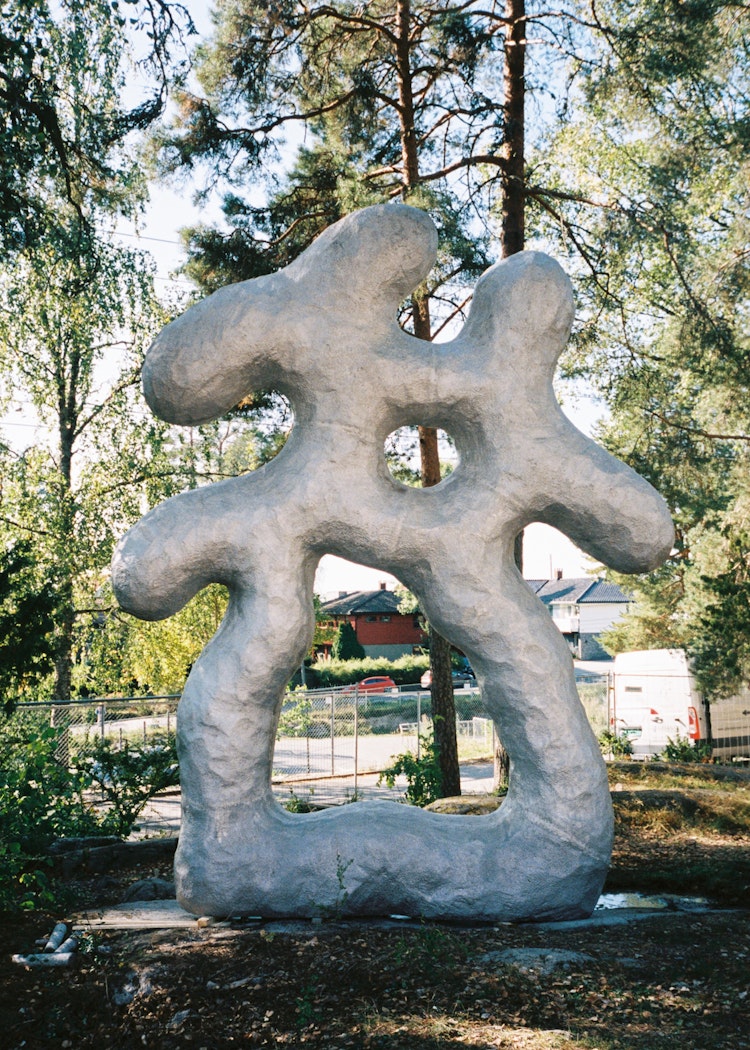
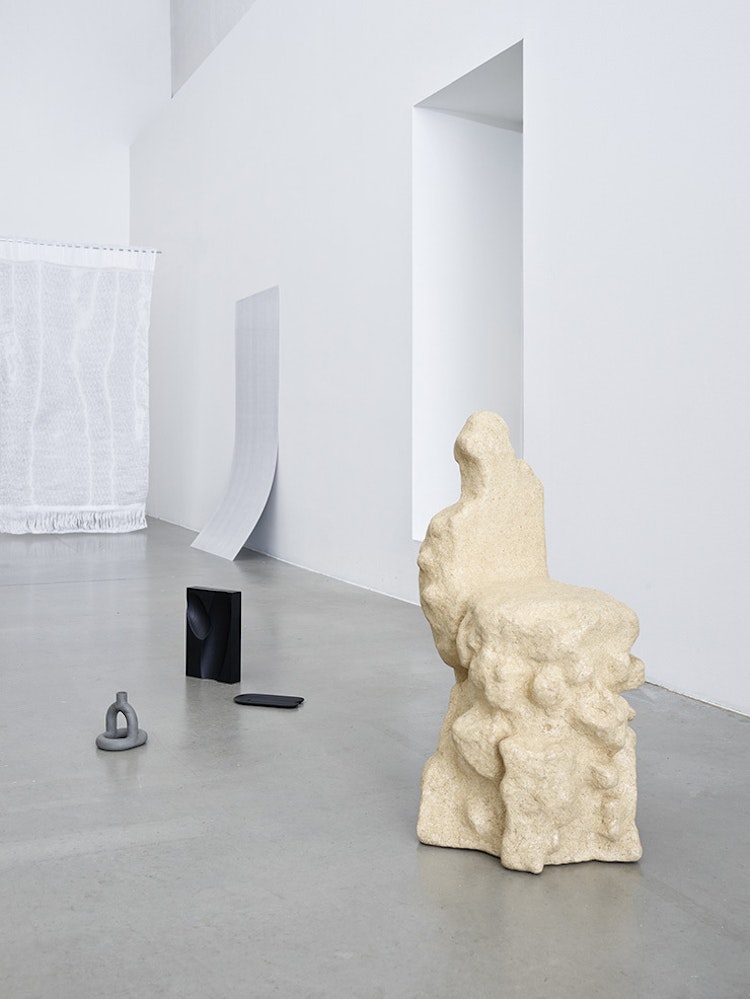

Material experiences
Using words such as ‘shelf’ and ‘chair’ within titles, he sees his works as functional; however, he also plays with functionality and in some instances his works seem more like sculpture than furniture. Interaction with materials is of the utmost importance to him, and, as such, use and domesticity are key aspects of his creative practice.
'My work is concerned with giving people material experiences. I think this is important because it seems like we are losing our collective knowledge about the things we surround ourselves with—what they are made of and how they are made. So, I am interested in everyday life and domestic settings, and treat them as tools to show material abilities and qualities. I feel that part of having an experience with a material is to interact with it—to test it. This could mean trying to hold, sit on, or stand on an object. I almost always think of my works as functional, and I guess this ‘test’ is why the functional aspect is important to me.'
Over the last couple of years, Knutson has participated in a range of projects and exhibitions, such as The Glorious Object at Patrick Parrish Gallery in New York, Beyond Generations at Van Abbemuseum in Eindhoven, and Norway x New York at Sight Unseen Offsite in New York. This spring, some of his creations are included in Norwegian Presence during Milan Design Week 2018.1 Together with other craft artists, designers, and manufacturers, he presents two works, Log Furniture Shelf Tower and Wood Clay Chair No. 3.
'Log Furniture Shelf Tower is a big tree log that is shaped by tools that I attach to my angle grinder. Unlike a chainsaw, the use of these tools doesn’t result in a certain formal language but allows me to be quite free. For example, I might even cut and gauge into the end grain of a piece of wood. This work is an example of my process of thinking through making: I might not have much experience with a tool before starting, but just know that I want to test it on something. 'Wood Clay Chair No. 3' is made with a mixture of PVA-glue, wood chips and wood dust. I first made a skeleton of sorts in whatever material I had on hand at the time. I find using polystyrene the most freeing in terms of form, since it is lightweight and so easy to shape. But any material that I have in the studio can be used, since the glue mixture stabilises the shape when it is dry. The glue-chip-dust mix is applied onto the shape/skeleton by hand; the material is now in a state where it resembles adobe or clay. I then let it dry completely before I add one or two more layers.'
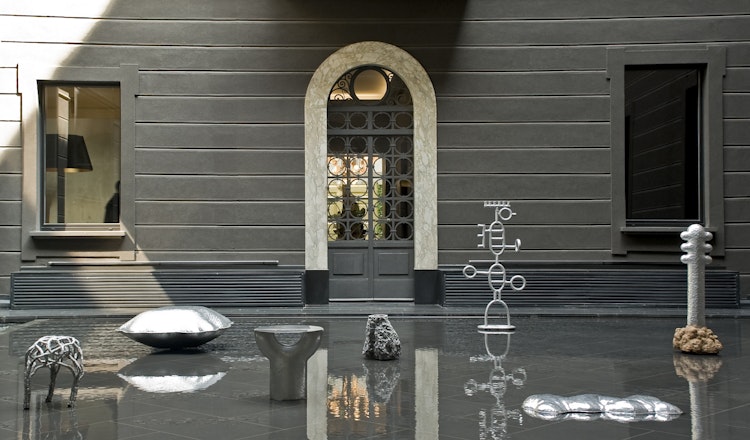
The people I have shared workshops or classrooms with have always helped me and influenced my work, probably more than any teacher or role model.
‘Form-giver’ more than designer
Knutson is excited about what is happening in the craft and design field at the moment, recognising a general interest from the public. It seems to him that the people who do great work are getting the attention they both need and deserve. Through people who have seen his work, he has discovered the work of other artists or designers, such as André Bloc, Jeremy Anderson and Brian Miller:
'When I show my work, some people will say that it reminds them of somebody, and in that way I discover new works that I otherwise would not have seen, so I often find a similarity to others, but I sort of discover it through an object that I have made.'
An open attitude towards how his work is contextualised, used and made seems to have followed him through his life. The period when he studied in Eindhoven, being in constant dialogue with other designers and artists, has had a huge influence on him and his practice.
'Even at the pub, we would repeatedly discuss techniques or tools we had seen on YouTube, or share information about artists and designers that we felt where on point. It was a ‘bubble’, but experiencing those three years where everything evolved around work, materials and techniques gave me so much knowledge as well as a drive that has since shaped the things I make. The people I have shared workshops or classrooms with have always helped me and influenced my work, probably more than any teacher or role model.'
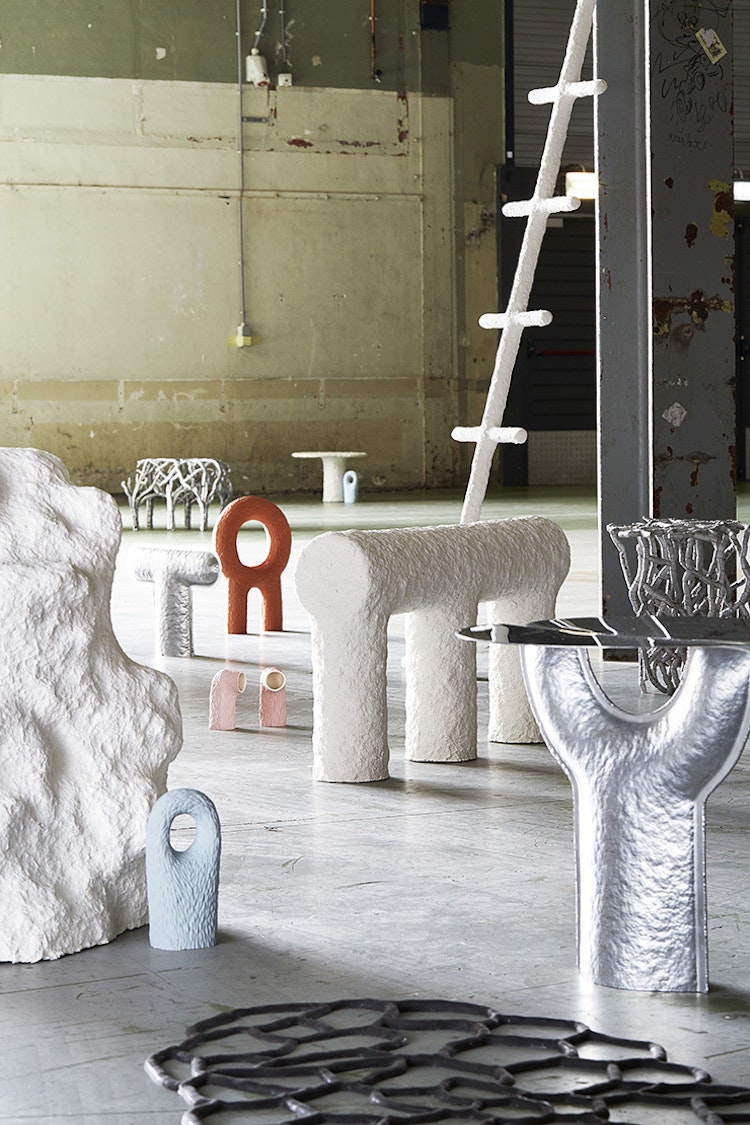
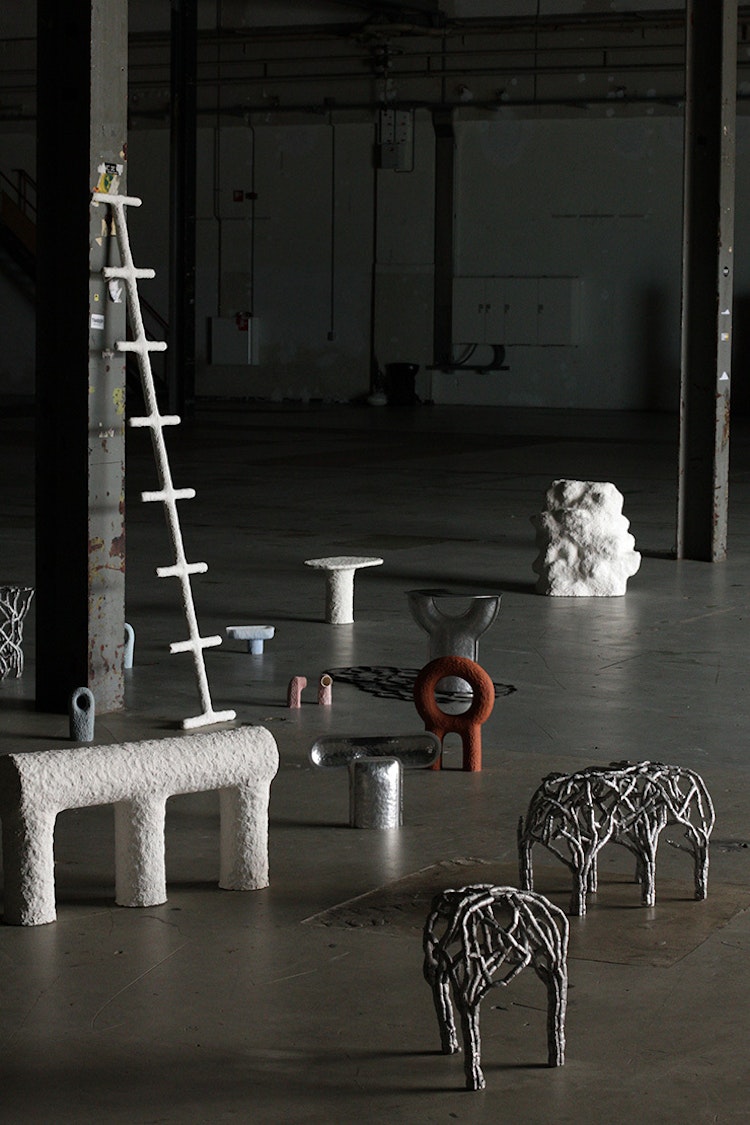
Perhaps his material focus and idiosyncratic approach can account for why he tends to be seen more as a craft artist—a kunsthåndverker2—than a designer in his home country:
'I find it interesting that before I moved back to Norway I was always placed within a design context. Now, in Norway, I fit better within what is called "kunsthåndverk". Maybe it is because our design tradition is totally different from that of the Dutch. I also feel like the term "designer" can mean anything, so I tend to think of myself as a "form-giver" more than a designer. My work is material-driven, and I base a lot of my working methods on techniques within the realm of craft, but, unlike a lot of craft artists, I don’t focus on perfecting one method or on specialising in a specific material or technique. I want to stay an amateur craftsman.'
Working prolifically and in a wide range of contexts, Sigve Knutson is currently involved in several projects simultaneously:
'I am trying out new things. I have started working on a textile project and it’s turning out to be really fun, so at the moment I am really into that. Another particularly interesting project is with a foundry in Eindhoven: Three other designers and I are working with the foundry Beeldenstorm and have set out to try new things, mainly casting techniques, at their location. This will lead to a show in September. I was also nominated for the Sparebanken Sør Art Prize, which means I get to exhibit together with three other great artists at SKMU Sørlandets Kunstmuseum. It will be a lot of fun exhibiting so close to my hometown. I am working towards this show right now and will try to mix new and old work to create scenarios or landscapes of objects. I have a great big studio space now, so really look forward to working as much as possible.'